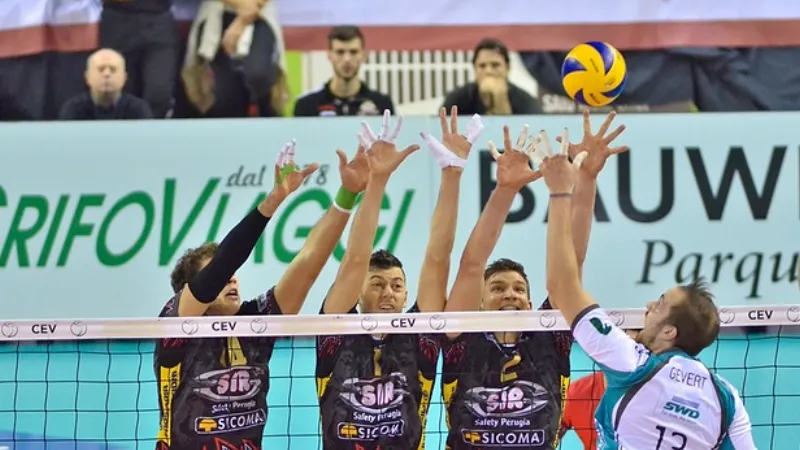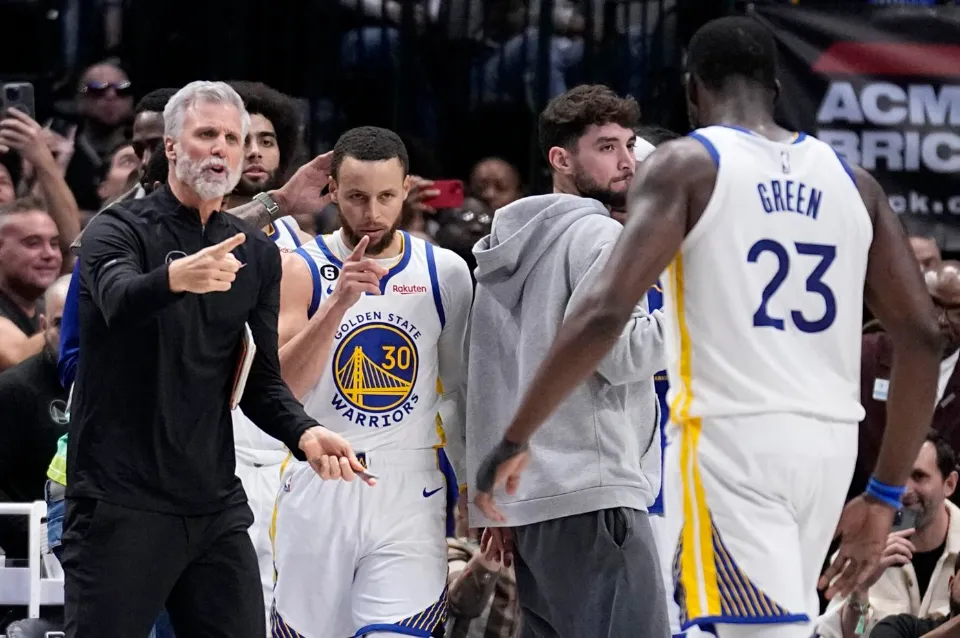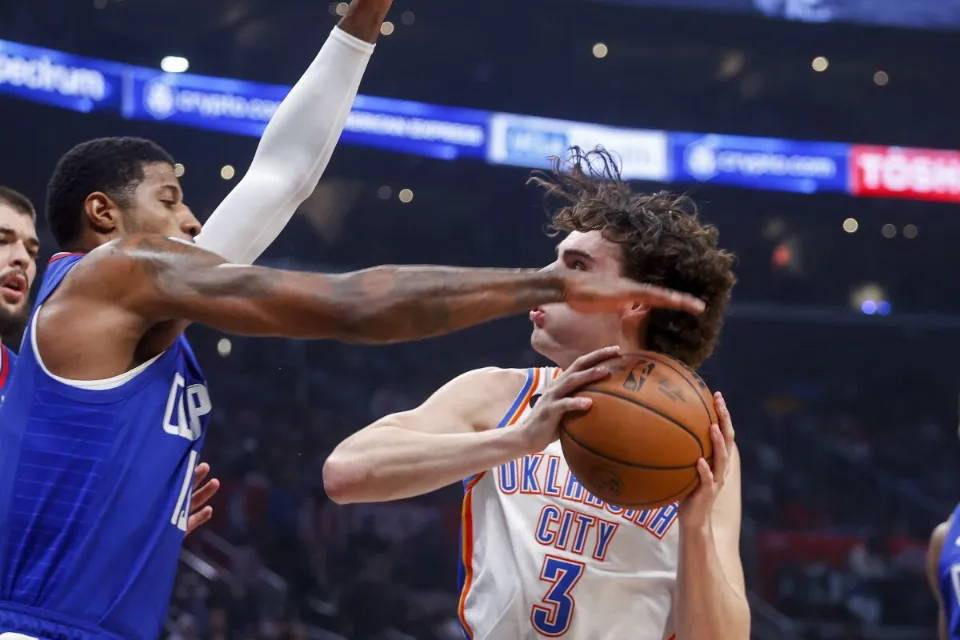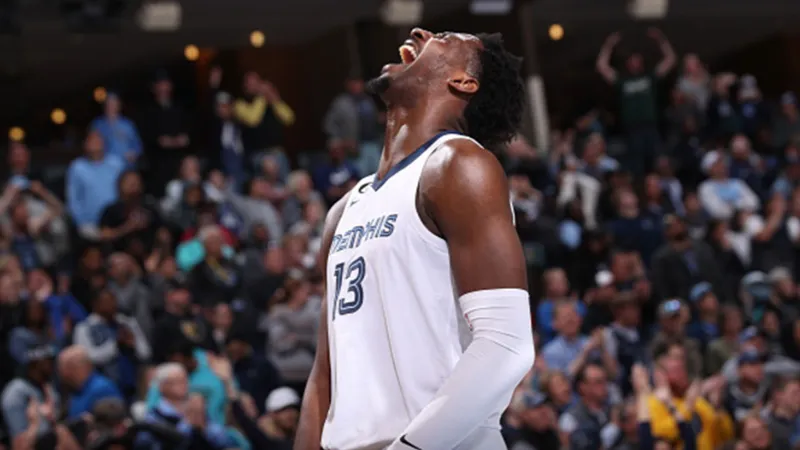3-2 Zone Defense Basketball: A Complete Explanation
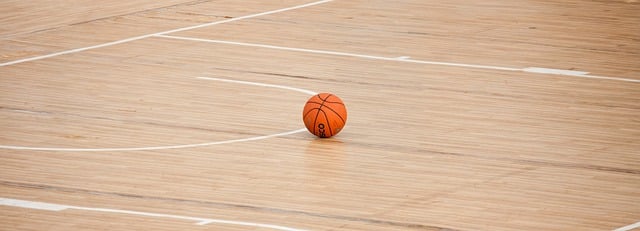
3 – 2 zone defense basketball: Three players are spread out across the upper half of the court in the 3-2 zone defense formation, while two players are spread out closer to the basket, on either side of the key, the area in front of the basketball hoop.
Zone defenses in basketball refer to designated portions of the court that players are tasked with defending. Zone offense’s defensive counterpart is zone defense.
For more specific information, keep reading.
Table of Contents
What Does A 3-2 Zone Defense Aim To Do?
The 3-2 zone defense can prevent the opposing team from making outside shots, but its main goal is to confuse the offense. In addition, compared to man-to-man defense, it can keep the defensive players well-rested.
Reversal passes can be made when a player falls into the gap, so defensive teammates must work well together to keep the offense moving the ball quickly enough to get an open shot.
When Do Teams Use A 3-2 Zone Defense?
When the opposition has strong outside shooters in addition to big men who struggle offensively, the 3-2 zone defense can be used.
The 3-2 zone defense can be modified to allow the zone defenders to jump out to specific shooters, even though there are times when it leaves outside shooters wide open. Another crucial element of the defense that can result in turnovers is the ability to trap specific “zones” of the court.
Player Positions In The 3-2 Zone Defense
The players enter the 3-2 zone in the correct positions. Three defenders are positioned close to the line for free throws, and two more are positioned on either side of the key, near the backboard. The three distinct roles to be played are made up of them collectively:
- Rover: The player at the top post, in the middle of the free-throw line, is known as the rover or middle defender. By blocking skip passes and advancing to help the post players with defense and rebounding, the rover guards the high post area.
- Wings: The team’s point guard and shooting guard are typically the two high post players who are positioned on the outside of the top line. They are in charge of defending their respective wings, trapping in the corner, and helping out in the key if necessary.
- Posts: They are in charge of guarding the center and power forward spots near the baseline in the key, so these two low post players should ideally be tall.
Ways To Implement The 3-2 Zone Defense
Players move as part of this defensive strategy to adjust to the offense. They may adjust their positioning to account for a change in where the ball is passed or dribbled to, try to steal it, avert a shot, or grab the rebound. The ball-side wing defender moves out to apply ball pressure if the ball is passed to the wing, whether it be through a direct or skip pass, while the post defender gets close to any offensive player to stop a shot or a pass.
If the ball is passed to the corner directly or through a skip pass, the strong side post player will move out to put pressure on the ball handler, and the weak side post player will cross to the other side of the key. The wing on the weak side moves in toward the strong side, keeping an eye out for any passes or players moving into the key, and the rover also moves in that direction, blocking any passes to the high post.

Pros Of The 3-2 Zone Defense
Basketball coaches should be familiar with the 3-2 zone defense because it has many important advantages. The advantages of this zone defense include:
Defensive Momentum Is Slowed
The 3-2 zone defense is excellent at breaking up the offensive rhythm. The ball handler at the top, who is not under direct pressure, can either attempt a challenging jump shot or pass to the wings. Direct pressure will then be applied to the player who receives the ball.
Good For Rebounding
By placing the zones in a certain way, a rebound triangle consisting of the rover and both post positions is created. They are easily able to close in for the rebound after a shot is made.
Hard To Spot
The 3-2 zone defense can make it difficult for the offense to understand the defensive plan and modify their play. Different rotations and variations can confound the offense, forcing them outside of their comfort zone to find open shots.
Weaknesses Of The 3-2 Zone Defense
A team should always have alternatives in their defensive playbook because the 3-2 zone defense does have some flaws. The zone defense has a few flaws, including:
Weaker Versus Proficient Shooters
Teams with excellent shooting abilities can make three-point shots fairly easily because there is less pressure on the offensive player at the top of the key and because the offense isn’t being closely guarded at the corners.
Dribble Penetration Prone
The zone can be broken down unless the rotations are executed very quickly. The point guard might be quick enough to slip past the rover and avoid the two wings, allowing for a variety of offensive basketball plays in the half-court.
Among The Players, Confusion
Uncertainty about where to go and who to guard can occur in any zone defense, especially if the offense is using quick back-and-forth passes. Strong fundamentals, reinforced by practicing different basketball drills repeatedly, are crucial to the success of any strategy.
Principles Of The 3-2 Zone Defense
Usually, your three guards (point guard, shooting guard, and forward) or your three smaller players are the three players at the top of the zone. The two big men can serve as your main rebounders because they are at the bottom of the lineup.
If you’re short on players or trying to keep your star players out of foul trouble, this defense is a good one to use.
It forces teams to take outside shots (rather than just open shots), deters teams from trying to penetrate, and with the right players, it can be very effective. See more about What Is Top Of The Key Basketball
Keys Of The 3-2 Zone Defense
Some of the most crucial keys in a zone require absolutely no talent or athleticism.
You need to have a team that plays actively and communicates well if you want to manage a zone effectively. Your player must communicate.
When the ball is in the creases or at the top of the key, this player is in charge of it.
Ball Is On The Wings
This player will defend the flood’s center. This player may stand on the nail if nobody is at the top of the key. If a player is at the top of the key, the player at the top of the key must decide how much to assist based on the player’s shooting prowess.
The Ball Is In The Corner
When the ball is in the corner, this player must observe how the high post and corner are handling it.
The top guard must defend the high post area if the wing defender picks up the ball.
They can reach the wing while also covering the middle of the floor in this manner. The top guard must make the offense stay on that side of the floor if the ball goes to the wing. then remain there until the wing can jolt them back to the center of the floor.
The guard still has to cover the same area if the post player receives the ball in the corner, but they no longer have to worry about the wing because the defensive wing is in charge of that. They are thus only concerned with the center of the floor.
To prevent the offense from escaping the trap with a simple pass to the wing, the top guard must immediately rotate to the wing if the post player and the wing player trap (this is the aggressive route). The player closest to the wing area must be denied by the top guard.
Ball Is In The Post
This should be hard to do, but it can happen. If the ball enters the post, the top guard will protect the nail area. And in football, act like a safety.
The top guard would then have to move to the ball side wing and block the player closest to them if your team chooses to trap the post (aggressive route).

Wings Of The 3-2 Zone Defense
When the ball is on their wing, these players are in charge of guarding it. Depending on the coach, they may also be in charge of covering the ball when it is in the corner.
In any case, the wing defender on that side of the floor should be the first player to the corner if the ball enters the corner from anywhere other than the ball side wing, though they may be bumped off. (Consequently, if the offensive team skips the ball or throws it from above the key or post.
When The Ball Is At The Free Throw Line
This player should be standing a foot away from the elbow if the ball is in the high post area (top of the key). By doing so, the zone is kept compact (preventing the team from penetrating) and an easy closeout to the wing is created.
The Ball Is In The Ball Side Corner
The wing defender is in charge of defending that space but may be moved back to the wing if the ball is skipped or passed from the top of the key or post. They ought to be in a wing help position if they are bumped off. acting as the nearest offensive player’s helpside player while playing.
They will guard the corner and try to force the dribble penetration to their baseline if the coach wants them to be in charge of the corner (so they don’t get bumped off). preventing them from making a turn into the middle.
This also means that if the ball is on the wing (so they are guarding the wing), and they pass to the corner, a big will be in charge of the initial defense, but the wing will have to push them off. maintaining the offensive player’s position so that they must drive baseline.
The final choice is to aggressively play the corner and trap it. This way, whoever arrives at the corner first will always be met by the other defender who will be setting up a corner trap.
Weak Side Wing
This player is in charge of playing on the opposing elbow when the ball is on the opposite wing. However, they will be more like a safety in football and will generally guard this area. They can see the entire floor and can assist teammates by trying to read the passer’s eyes while assisting everyone else with their defensive positioning.
Ball Is In The Weak Side Corner
Where the player should be will depend on the style of play the coach prefers.
The top guard must then cover the wing if the wing is defending the corner. The nail area will be covered by this wing. For any skips, they will be liable. Additionally, this wing must cover the ball if it manages to pass the top guard’s head and land at the top of the key (without being stolen). attempting to keep the offense there, if not permanently, then at least until they are moved back to their original position.
Depending on how the offense develops, if the big covers the corner, the opposite wing will cover the opposite block/mid post area. continuing to communicate and play the safety.
This player will have to get to the middle of the floor (the nail area) if the team chooses to trap the corner. increasing the difficulty of removing the ball from the trap. Responsible for the middle (steal this pass) and skips (play standard defense on this pass).
The Ball Is In The Ball Side Post
Where to be will be determined by how the coach wants to handle this.
Either cover any player on this side of the floor with this player (the side post player), or play help defense from there. The lower of the two offensive players must be guarded if there are more than one.
Additionally, they have the ability to trap the post. to try to make a change.
If The Ball Is In The Weak Side Post
You will be on the opposing elbow or even farther away if your team is not trapping. defending against any skips, communicating, and acting in a safety role.
This player is in charge of the elbow area on the ball side of the floor if your team is trapping. You are responsible for closing out and playing defense if the ball is skipped to the other side of the court. No passes should enter this area without being stolen.
Alternative Defenses Of The Zone Defense
Finally, let’s cover the list of defenses other than a zone setup…
Man-to-man Coverage
Man-to-man defense, which is the antithesis of the standard zone defense, pairs each player up on defense with an opponent.
Diamond & One
The defense will use a diamond formation and one in which one player is playing man-to-man while the other players are forming a diamond if there is a star offensive player—typically a shooting guard or small forward—that needs special coverage.
At the three-point line’s center is the top defender.
Box & One
The box & one is similar to the diamond & one in that it is for that one outstanding offensive player, which could be a point guard. The four corners of the restricted area specify the box formation.
Triangle & Two
The triangle & two might work well for teams with two potent offensive players.
The top defender is close to the middle of the free throw line, and the low post defenders are in the same locations as the box and one.
FAQs
What is a 1-3-1 Zone Defense?
The 1-3-1 zone defense is a defensive basketball formation. Legendary basketball coach Red Sarachek was the one who first used it. Since there is one defender at the point, three defenders at the free throw level, and one defender at the base line, this defense is named for its formation.
What is a 1-2-2 Zone Defense Basketball?
In a 1-2-2 zone defense, the top defender is on the basketball and the two wings are protecting the free-throw line and allowing the pass to be made to the wing. The point guard is not under pressure in a 3-2 zone by the top defender. The pass into the high post is instead denied by them sagging back.
What is a 3-2 Offense?
The 3-Out 2-In Motion Offense involves two players in the post and three players positioned around the perimeter. The objective is to get the ball inside, but your post players don’t have to do all the scoring.
Disadvantages of Zone Defense in Basketball
- You won’t feel pressure on the ball if your team is down, and the offense can stall and hold the ball for a good shot. …
- Going man-to-man to apply pressure to perimeter shooters is a viable option if the opponent is having a successful shooting night and your zone is not working.
The Bottom Line
When using the 3-2 zone, you place the point defender (X1) near the foul line. As a result, you can also place your wing defenders a little farther apart.
In exchange, the point guard gets a few chances to score. This will aid in defending the high post.
As with the 1-2-2 zone shown in diagram B, you can still cover the wing with the 3-2 zone. While the opposing wing slides into the high post, you can trap the wing by pairing the middle defender with the wing defender (Diagram K). The weakside low defender X5 moves to the middle of the lane when the ball is on the wing.
I appreciate you taking the time to read.

